
Agnes Broun, Agnes Brown or Agnes Burnes, was the mother of Scotland's national poet, Robert Burns. Agnes's father, Gilbert (1708–1774), was the tenant of the 300-acre (120 ha) farm of Craigenton, in Kirkoswald parish, South Ayrshire, Scotland.

Nelly or Nellie Kilpatrick, Helen Kilpatrick or later Nelly Bone (1759–1820). Nelly was possibly Robert Burns's first love and muse as stated by Isabella Burns.

William Burnes or William Burness was the father of the poet Robert Burns. He was born at either Upper Kinmonth or Clochnahill Farm, Dunnottar, Kincardineshire, and trained as a gardener at Inverugie Castle, Aberdeenshire, before moving to Ayrshire and becoming a tenant farmer. His parents were Robert Burnes and Isabella Keith. He retained the spelling 'Burnes' throughout his life; however, his son favoured the Ayrshire spelling of 'Burns'.

Gilbert Burns, the younger brother of Robert Burns the poet, was born at Alloway. He married Jean Breckenridge in 1791, had six sons and five daughters, died in 1827, aged 66, and was buried at Bolton, East Lothian, Scotland. Gilbert's writings have contributed greatly to the bank of knowledge that exists regarding the life of his famous brother.

Robert Burnes or Robert Burness was a paternal uncle of the poet Robert Burns. He left the family farm of Clochnahill or Clokenhill in Kincardineshire with his younger brother William Burnes, and found work at the Lochridge or Lochrig limestone quarries and lime kilns that lay near Byrehill Farm near Stewarton. He was a teacher, a gardener later in life and a land steward on the nearby Robertland Estate, possibly through the influence of his nephew. Robert Burns referred to his him as Poor Uncle Robert upon his death in 1789.
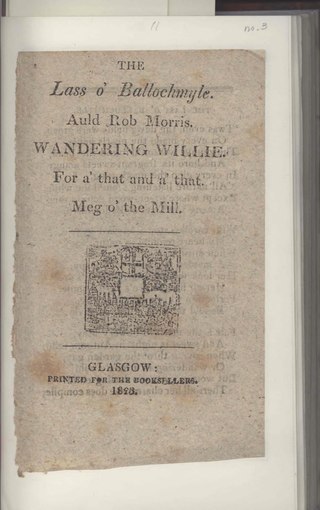
Wilhelmina Alexander (1756–1843), was born at Newton House, Elderslie, Renfrewshire. She was the 4th daughter of Claud Alexander of Newton and Joanna, daughter of Alexander Cuninghame of Craigends. Her lasting fame derives from being Robert Burns's 'The Bonnie Lass o'Ballochmyle' in the song of that title. Robert Burns was accustomed to taking walks and musing over his poetry and songs in the Ballochmyle Estate next to the River Ayr when he caught sight of her one-day and composed the song in memory of the event. She refused publication at the time and Burns never forgave this perceived slight on his genius, Wilhelmina never married, she did however treasure the letter and the manuscript of the song until her dying day.
Adam Armour (1771–1823) was the younger brother of Jean Armour and therefore the brother-in-law of the poet Robert Burns. In addition, being married to Fanny (Frances) Burnes, he was also related to the poet through his father-in-law 'Poor Uncle Robert', who lived at Stewarton.
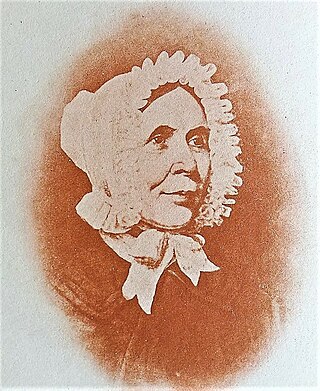
Isabella Burns (Isabella Begg) (1771–1858) or Isobel Burns (Isobel Begg) was the youngest sister of the poet Robert Burns, born to William Burness and Agnes Broun at Mount Oliphant Farm on the 27 June 1771 and christened on 2 July 1771 by Rev. William McGill, a friend of her father. When she died she was the last member of Robert Burns's immediate family and when living at Bridge House in Alloway for the last sixteen years of her life she entertained many visitors who were interested in his life and works. She was the source of many published insights into Burns' life, character and loves. Her siblings knew her as 'Isbal'.
James Armour was a master mason and father of Jean Armour, and therefore the father-in-law of the poet Robert Burns. His birth year was shown here as 1730. The Scotland's People database has no record of this year of birth for a James Armour. Wikitree and several other data sources have his birth date as 10th/24th January 1731. The Scotland's People database has this record but showing his baptism on 24 January 1731. His birth on the original Old Parish Record is shown as 15 January 1731 to John Armour and Margrat(sic) Picken in Kilmarnock. James named his first son John which would normally be after James's father i.e. John. The chances of there being two James's born on exactly the same date exactly one year apart appear very remote and the naming of the first child seems to validate the conclusion that James Armour was born in 1731 and not 1730.
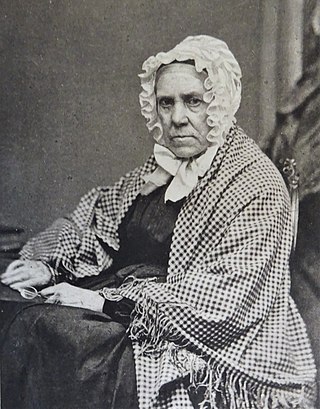
Elizabeth Burns, Elizabeth Park or Mrs John Thomson known as Betty Burns, was born in 1791 in Leith, Scotland. She was the illegitimate daughter of Robert Burns and Anna Park who was a barmaid at The Globe in Dumfries. She married John Thomson in 1808 to become Elizabeth Thomson.

James Smith of Mauchline was one of Robert Burns's closest friends and confidants. He was born in 1765, son of a Mauchline merchant, Ayrshire, Scotland. In 1775, when he was only ten years, old his father, Robert Smith, a prosperous local merchant, was killed in a riding accident, falling from his horse whilst returning from Ayr. His mother, Jean Smith, remarried James Lamie who owned the adjoining house.

John Murdoch of Ayr was Robert Burns's most significant teacher or tutor and he was a friend of the Burnes family. He was born in 1747 and first taught Gilbert and Robert Burns in Alloway when he was only aged eighteen. He remained in contact with the Burnes family for several years after leaving Ayrshire for London. Murdoch, William Burnes and Richard Brown were amongst the most significant influences on Burns life during his early years in Ayrshire.

Robert Ainslie (1766–1838) was a Scottish lawyer, and one of Robert Burns's long-term friends from his Edinburgh days. He was probably the closest confidant of Burns, whom he met first at a Masonic or Crochallan Fencibles event. Ainslie accompanied the poet on the first part of his Border Tour. Robert's father, also Robert, was a lawyer a bailie at Duns and a land-steward on Lord Douglas's Berwickshire estates. Robert married Jean Cunningham on 22 December 1798.
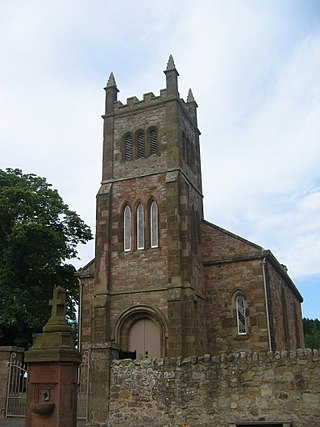
Annabella Burns or Nannie Burns (1764–1832) was the second oldest sister of the poet Robert Burns, and the last child born to William Burness and Agnes Broun whilst at the Alloway cottage. She was born on the 14 November 1764 and she was christened on 17 November by Rev. William Dalrymple, the minister of Ayr Parish Church. When she died in 1832 she was the last member of Gilbert Burns's household at Grant's Brae to be buried at the Bolton Kirk family lair. Gilbert Burns had died, also aged 67, five years earlier in 1832.

John Burns (1769–1785) was the youngest brother of the poet Robert Burns and the last son born to William Burness and Agnes Broun. John was born at Mount Oliphant Farm on the Doonholm Estate near Alloway on the 12 July 1769. He was christened circa 21 July 1769 by Rev. Rev William Dalrymple.

William Burns (1767–1790) was the second youngest brother of the poet Robert Burns and the third son born to William Burness and Agnes Broun. William was born at Mount Oliphant Farm on the Doonholm Estate near Alloway, about three miles from Ayr, on the 12 July 1769. He was christened circa 6 August 1767 by the Rev. Rev William Dalrymple of Ayr parish and kirk.

Francis Wallace Burns (1789–1803) was the second son of the poet Robert Burns, born when the poet was 30 and his wife Jean Armour was 24. Francis was born at Ellisland Farm in Dunscore parish, Nithsdale on the 18 August 1789. His first and middle names were added in honour of Frances Dunlop of Dunlop, Robert's friend, patron and mentor. Her maiden name was Frances Anna Wallace and what is known of his early life comes from the many letters to Frances in which he was mentioned. His father died in 1796 and little is known of Francis's short life after this date.

James Glencairn Burns (1794–1865) was the fourth son and eighth child born to the poet Robert Burns and his wife Jean Armour. James was born at their home in Mill Brae Street, now Burns Street in Dumfries on 12 August 1794. His first and middle name was added in honour of James Cunningham, 14th Earl of Glencairn, Robert's friend, patron and mentor.

William Nicol Burns (1791–1872) was the sixth child, third born and second surviving son born to the poet Robert Burns when he was 32 and his wife Jean Armour was 26. William was born at Ellisland Farm in Dunscore parish, shortly before the family moved to Dumfries in 1791. His first and middle name was added in honour of William Nicol, Robert's friend.
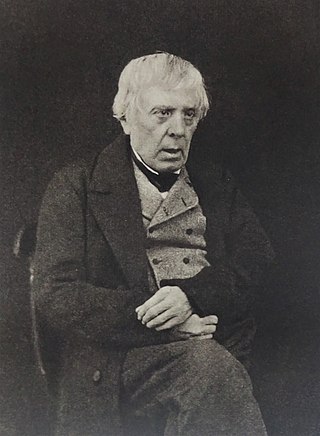
Robert Burns Junior or Robert Burns ll (1786–1857) was the first son and one of the first pair of twins born to the poet Robert Burns and his wife Jean Armour. He was born on the 3 September 1786 and baptised on 5 September. John Tennant of Glenconner was a witness at the baptism. His twin sister was Jean Burns, who died of unknown causes in infancy on 20 October 1787. His father, who often called him 'Bobbie', died when Robert Junior was only 9 years old, at which point he was the eldest of a family of five legitimate male offspring.





















